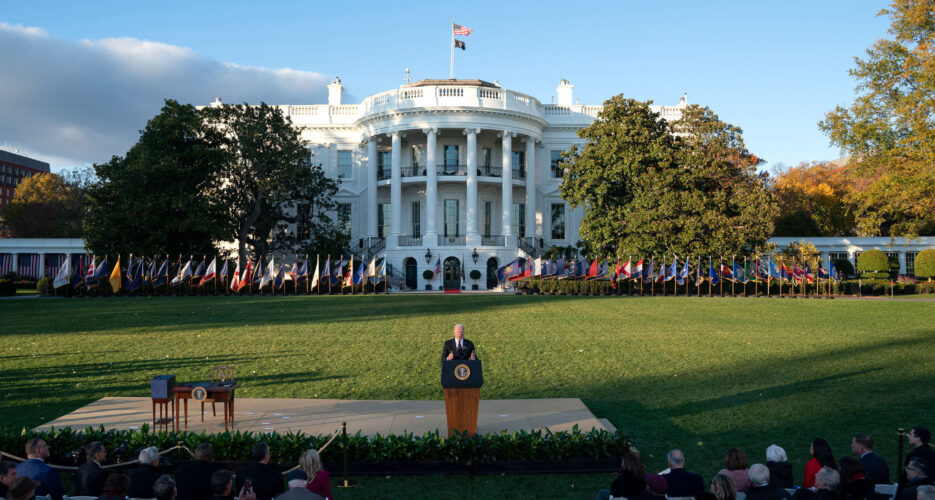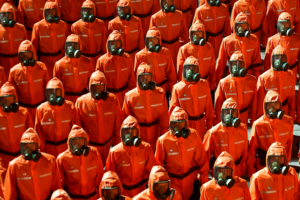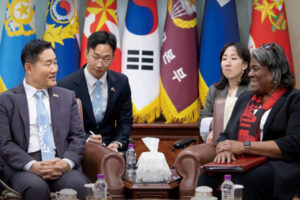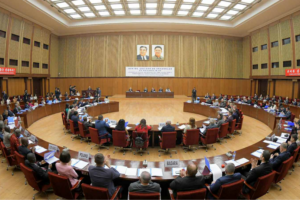Since the latter years of the Barack Obama administration, “strategic patience” has been a euphemism for playing it safe on the Korean Peninsula. It has become a term of disdain for both engagers and containers, as it is hostile to North Korea in appearance yet enables it in effect. Whatever else one says about Obama’s second-term policies — from sanctions to human rights denunciations — they did nothing to curtail the North’s weapons systems development.
The Trump administration in 2017 made a show of abandoning the strategy. Yet by the second half of President Trump’s term, when face-to-face diplomacy fizzled, it became apparent there was not a backup plan. We were stuck again with strategic patience: little diplomatic initiative from either side, few efforts to compel or entice change and no ground given as North Korean weapons development continued.
Since the latter years of the Barack Obama administration, “strategic patience” has been a euphemism for playing it safe on the Korean Peninsula. It has become a term of disdain for both engagers and containers, as it is hostile to North Korea in appearance yet enables it in effect. Whatever else one says about Obama’s second-term policies — from sanctions to human rights denunciations — they did nothing to curtail the North’s weapons systems development.
The Trump administration in 2017 made a show of abandoning the strategy. Yet by the second half of President Trump’s term, when face-to-face diplomacy fizzled, it became apparent there was not a backup plan. We were stuck again with strategic patience: little diplomatic initiative from either side, few efforts to compel or entice change and no ground given as North Korean weapons development continued.
Become a member for less than $4 per week.
Unlimited access to all of NK News: reporting, investigations, analysis
The NK News Daily Update, an email newsletter to keep you in the loop
Searchable archive of all content, photo galleries, special columns
Contact NK News reporters with tips or requests for reporting
Get unlimited access to all NK News content, including original reporting, investigations, and analyses by our team of DPRK experts.
Subscribe now
All major cards accepted. No commitments – you can cancel any time.










